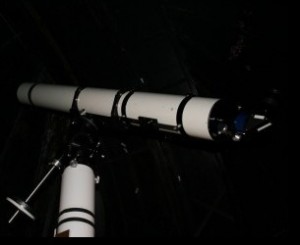Here’s a downloadable schedule of events.
Friday Schedule:
Time
|
Activity
|
| 2:00 PM |
Facility open to campers for setup, bathrooms open
Viewing in yard, both solar and astronomical |
| 2:00 – 6:00 PM |
Solar Viewing hosted by Ana Castillio, in the Yard (Spectroscope, H-Alpha and white light), in the Domes (Herschel Wedge on 6” AstroPhysics Refractor) and with the Heliostat Refractor, dedicated to the memory of the “Legendary Barlow Bob” Godfrey in 2014, in the Physics Lab. |
| 3:00 PM |
Doors open to public, facility tours and observing (starting with Mars, then the Moon, followed by the planets Saturn, Uranus, and Jupiter). Coffee, tea, hot chocolate, juice, snacks available in Lobby. |
| 5:00 – 6:20 PM |
Swap Meet – buy and sell your treasurers (in Earth Science Lab). KOSC used equipment for sale to raise funds for our new equipment. |
| 5:30 – 9:00 PM |
Moon program in the portable planetarium – Dr. Nicholas Guidosh, and Robert Olaf Siegers, KOSC/KAS ($3 fee) |
|
|
| 6:30 – 6:55 PM |
Welcome to AstroFest 2025 – Drew Deskur, Executive Director Kopernik Observatory & Science Center.
George’s Best Images, a Video Slide Show – most captured right here at Kopernik Observatory! – George Normandin, KAS President |
| 7:00 – 7:55 PM |
IOMN (International Observe the Moon Night) – Andrew Beck, KAS – Saturday night is International Observe the Moon Night (IOMN)!
Join us as we take part in one of over a thousand events around the world celebrating our closest celestial neighbor. Discover the Moon’s history, geology, human exploration, and the art it has inspired throughout the ages. |
| 8:00 PM |
NASA Artemis: Moon to Mars – Gary O’Neal, Johnson Space Center, NASA, Cape Kennedy. It has been over 50 years since the Apollo missions brought us “one small step” towards exploring beyond our home: Planet Earth. NASA’s Artemis program will re-engage human exploration of the Moon that will allow for long term lunar missions and sets the stage for missions deeper into the solar system. Southern Tier native Gary O’Neil, Element Architect / Acting Assoc. Project Manager for Deep Space Logistics (DS) at NASA’s John F. Kennedy Space Center will talk about the plans and challenges facing the Artemis program. |
| After The Program |
Night Sky Viewing –in the Domes and in the Yard, demo of the Dwarf and ZWO SeeStar telescopes, Imaging Demo of FLI Camera on 20” OGS RC, Night Sky Laser Tours, hot beverages and snacks available, bathrooms and domes open all night. If cloudy: Movie in Space Science, Lobby closes at Midnight. |
| Midnight |
Lobby Closes (Restrooms remain open all night) |
Saturday Schedule:
Time
|
Activity
|
| 7:30 to 10 AM |
Coffee, tea, hot Chocolate, juice, donuts available in Lobby |
| 10:00 AM – 5:00 PM |
Solar Viewing hosted by Ana Castillio, in the Yard (Spectroscope, H-Alpha and white light), in the Domes (Herschel Wedge on 6” Astro Physics Refractor), and in Physics (Heliostat Refractor, dedicated to the memory of the “Legendary Barlow Bob” Godfrey in 2014). Clear only. |
| 10:00 AM – 12:00 PM |
IOMN Activities 1, 2, and 3 TBA (Please sign up for this event). KOSC staff. Space Science, Physics Lab, and Computer Lab. Moon program in the portable planetarium. Art Cacciola/KAS and Nicholas Guidosh, KOSC/KAS. Crater Making Activity and Formation Demonstration – Dr. Nicholas Guidosh, KOSC/KAS |
|
|
| 11:00 – 6:00 PM AM |
Swap Meet – buy and sell your treasurers (in Earth Science Lab). KOSC used equipment for sale to raise funds for our new equipment. |
| 12:00 – 1:00 PM |
Lunch – pre-order lunch, someone will pick it up and deliver it to you at Kopernik |
| 1:00 – 2:00 PM |
Astronomy Clubs Roundtable Discussions – Dave Daniels, KAS, MC – What are we doing in EAA astrophotography? |
| 2:00 – 2:55 PM |
Postcards from Beyond: A Timeline of Photographic Exploration – Zoe Learner Ponterio, Manager, Spacecraft Planetary Image Facility, Cornell University. For over 50 years we’ve been sending cameras into space. Some are operated by hand, but the vast majority travel aboard robotic spacecraft, voyaging far beyond the current reach of human exploration. In addition to the wealth of scientific discoveries these pictures have sparked, there is the sheer joy their beauty brings to all who see them, and what they say about our desire to venture into the unknown. Join us for a journey through the decades to see how far we’ve come in our quest to explore the Solar System through our robotic eyes. |
| 3:00– 3:55 PM |
Show and Tell Meteorites – Patrick Manley, KAS. Join Patrick in his interesting talk and look at and hold a plethora of meteorites. |
| 4:00 – 4:55 PM |
EAA (Electronically Assisted Astronomy) – Keith Werkman, KAS, it’s been another year of learning how to get the most out of the ZWO Seestar and other EAA devices. See what has been accomplished and learn how to make your own astrophotography images. Demo to follow later tonight. |
| 5:00 – 6:00 PM |
Dinner Break and Musical Entertainment by Robert Siegers |
| 6:00 |
Raffle and Door Prize Drawings – you need not be present to win! |
| 7:00 – 7:55 PM |
Radio Astronomy at the Green Bank Observatory – Sasha Zalesski, KOSC/ KAS. Details coming soon |
| 8:00 – 8:10 PM |
Welcome to AstroFest 2024 – Laura Lamash, EdD, Director of Education, KOSC. |
| 8:15 PM |
Keynote Address – Through the Looking Glass: Corning’s Legacy of Innovation in Astronomy – Andrew Fox, Product Engineering Manager, Corning Advanced Optics. For nearly a century, Corning Incorporated’s innovative materials and optical technologies have transformed astronomy, enabling humanity to explore the universe. Pioneering advancements such as Dr. Franklin Hyde’s flame hydrolysis process for high-purity fused silica and Dr. Martin Nordberg’s development of ULE® glass have provided the thermal stability and optical precision essential for modern telescopes. These innovations, along with others, paved the way for milestones such as the 200-inch mirror for the Hale Telescope, the lightweight mirror for the Hubble Space Telescope, and components for the Vera C. Rubin Observatory. From Hale to Hubble to Rubin, Corning’s innovations have transformed humanity’s ability to explore the cosmos. |
| After the Program |
in the Domes and in the Yard, demo of the Dwarf and ZWO SeeStar telescopes, Imaging Demo of FLI Camera on 20” OGS RC, Night Sky Laser Tours, hot beverages and snacks available, bathrooms and domes open all night. If cloudy: Movie in Space Science, Lobby closes at Midnight. |
| Midnight |
Lobby Closes (Restrooms remain open all night) |
|


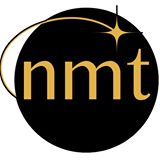



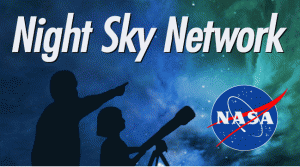
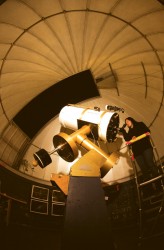 20″ Optical Guidance Systems Ritchey-Chretien F/8
20″ Optical Guidance Systems Ritchey-Chretien F/8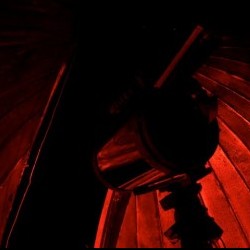 14″ Celestron C14 F/11 SCT Celestron CGE Mount
14″ Celestron C14 F/11 SCT Celestron CGE Mount